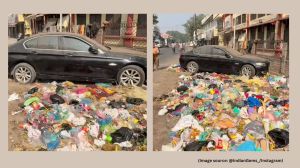MIT steps in to find a doctor for this village
Kuka Gopa skipped work on Thursday. His 10-year-old son Madan woke up with a raging fever and Gopa had to bring him to the Varda panchayat s...

Kuka Gopa skipped work on Thursday. His 10-year-old son Madan woke up with a raging fever and Gopa had to bring him to the Varda panchayat sub-centre for treatment. Sitting on the steps of the locked healthcare centre, he is cursing his luck.
‘‘I work as a labourer in Udaipur and earn daily wages (Rs 60),’’ he says, chiding his son for standing in the blazing April sun. ‘‘The boy woke up with fever, I have to show him to the doctor. But like always, there is no one here. I was hoping against all odds that the nurse would actually be here today. I was wrong.’’
Gopa has never heard of the Massachussetts Institute of Technology or Princeton but it would amaze him to know that they have discovered all about the rampant absenteeism among government doctors and nurses that plagues him at the Varda sub-centre.
They even know that the nurse posted at that particular centre is almost never there — like many of her counterparts at 99 other hamlets that were checked as part of a new study carried out by them.
In their report on the healthcare delivery in rural Rajasthan, economists coordinating the research (and also co-founders of the poverty action lab at MIT), Professors Abhijit Banerjee, Esther Duflo and Angus Deaton of Princeton state: ‘‘The picture painted by our data is bleak. Villagers’ health is poor despite the fact that they heavily use healthcare facilities and spend a lot on healthcare.’’
The doctors are trying to determine just what steps will ensure that Gopa doesn’t have to squat outside a centre, waiting for help.
For example, a digital camera or a punch clock is going to be installed at the clinics to monitor attendance. Nurses and doctors will be expected to click a picture of themselves at the clinic every morning to register their presence or punch in their cards.
The strategy will be tried in half the villages or clinics and then the health of people who got the help will be compared with those who did not. These interventions were planned after researchers carried out a detailed survey of 100 villages in some of the most remote tribal blocks of Rajasthan for a year. They found that 44 per cent of doctors and nurses were not where they were supposed to be. As a result, all these health establishments were closed more than half the time, forcing residents like Gopa to either wait endlessly or trek to the nearest private clinic.
‘‘Each time we were told a doctor or nurse had gone on a call, we tried to find them in the village. We almost never did,’’ explains young Ashwin Vasan, who is holding the fort for his professors in Udaipur.
In districts where the average per capita household expenditure is Rs 470 and more than 40 per cent of the people live in households below the official poverty line, more than half the populaton is anaemic and an alarming 91 per cent have low body mass index and symptoms of disease are widespread.
Unlike Gopa, the survey found that 79 per cent of the time people turn to private doctors or bopas (traditional healers), spending 7 per cent of their monthly budget on medical care. Also, four out of 10 private doctors surveyed had no medical degree.



- 01
- 02
- 03
- 04
- 05




























